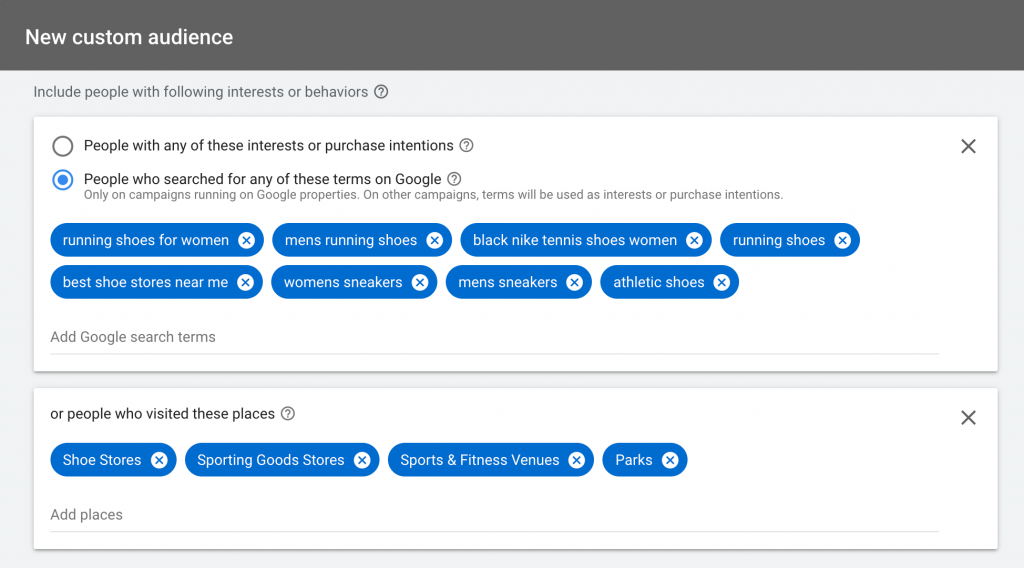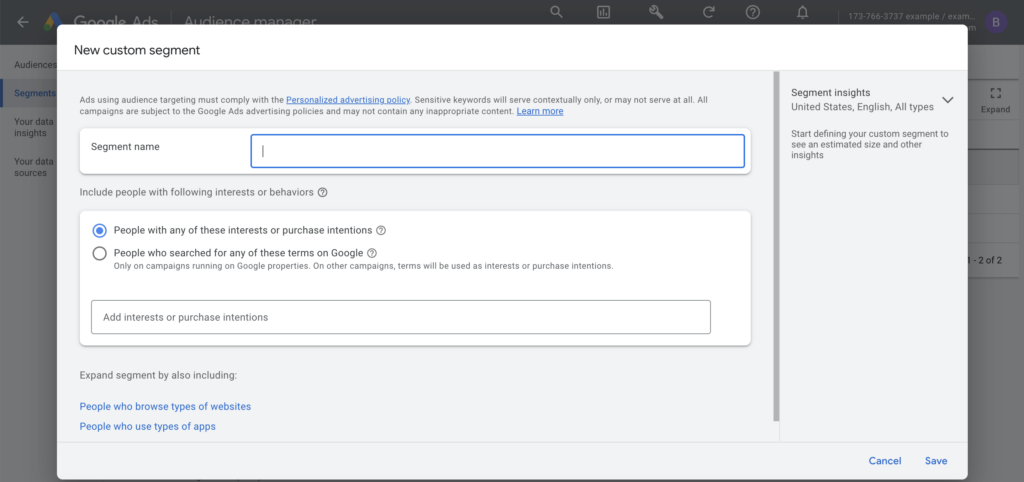Post map
ToggleTo achieve high effectiveness in Google Ads advertising, the first important step is to reach the right audience for your business. Even if you reach a large number of users, if they don’t have a need, your ads won’t deliver the expected results. Therefore, creating custom audiences when running ads is necessary and crucial. What are custom audiences in Google Ads? How to use Custom Audiences in Google Ads is automatically created. In today’s article, let’s learn and answer the following questions with Optimal FB!
What are custom audiences in Google Ads?
Custom intent audiences allow you to reach ideal audiences for your business in Display Campaigns and Video Campaigns by segmenting ad groups based on specific keywords and landing pages you want to target. You can use custom intent audiences with automatically created audience segments or define your audience by entering keywords and relevant applications related to your products or services. Then, Google Ads will display ads to people who are likely to be interested in these keywords on websites, apps, and videos. To learn more about the audience targeting feature, you can refer to additional detailed information. When starting to work with custom intent audiences, remember to create keyword lists to target the appropriate customers. This also applies to creating ad groups and setting default bids for your ad groups. These are the basic steps you should consider to optimize your advertising campaign.

Instructions for adding custom audiences in Google Ads
To use automatically created custom intent audiences for Display Campaigns in Google Ads, you can follow these steps:
- Step 1: Log in to your Google Ads account: Access the Google Ads website and log in to your account with the correct login information.
- Step 2: Choose Display Campaigns: In the navigation menu, select “Display Campaigns” and choose one of your active campaigns.
- Step 3: Select Audiences: In the campaign management interface, click on the “Audiences” tab.
- Step 4: Edit audience: Click the pencil icon to edit the current audience or create a new audience.
- Step 5: Choose ad group: Select an ad group from the available ad group list or create a new ad group if necessary.
- Step 6: Select audiences considering purchasing: In the “Browse” tab, you can select products or services that customers are actively researching and planning. These are the custom intent audiences you want to target.
- Step 7: Add new audiences: In the “Automatically created custom intent audiences” section, click the “New Audience” button and select the audiences you want to add.
- Step 8: Save changes: Once you’ve finished selecting audiences, click the “Save” button to save the changes and apply the new audience to your campaign.
By following these steps, you can use custom intent audiences to shape and optimize your Display Campaigns advertising on Google Ads effectively.
What should you keep in mind when adding custom audiences in Google Ads?
To start advertising effectively on the Google Ads platform, an essential prerequisite is that you have the Editor role for the property for which you want to create an audience. This ensures that you have access to and edit information related to your advertising campaign. If you base an audience on the Session Date dimension, there is a condition that you need to publish the audience at least 5 days before the date of the session you want to collect. While Analytics can backfill Search and Display Network audiences with up to 30 days of data, it does not backfill based on the Session Date dimension. However, it’s also important to be aware of limitations during object creation. You can only create up to 2,000 objects per asset. On an Analytics 360 property, you can publish up to 50 audiences, while on a standard Analytics property, you can only publish up to 20 audiences. If your account is not for advertising purposes, like an Optimize or Analytics account, you can publish an unlimited number of audiences.
Additionally, you can only publish one audience to a maximum of 10 ad accounts at a time, including Google Ads Manager Accounts, Google Ads Serving Accounts, and Display & Video 360. However, a Google Ads Manager Account will be counted as 1/10 of the above account. Note that you can’t publish Universal Analytics audiences to Search Ads 360 or Campaign Manager 360. This limits the flexibility to manage and use your audiences across different advertising platforms across Google Ads .
In the article on Optimal FB, we have provided the most detailed and accurate information. We hope that the content can help you understand the concept of custom audiences in Google Ads and implement them. Successfully creating custom audiences in Google Ads.

Contact Info
Are you in need of Facebook advertising or need to rent a quality Facebook advertising account? Don’t worry! Optimal FB is a unit specializing in providing reputable Facebook accounts, as well as direct advertising support. Provides all types of advertising accounts such as casino facebook ads to help you reach and create fast conversions.
Frequently asked questions
Adding custom audiences in Google ads brings many advantages such as the ability to reach the right target audience, increase conversion opportunities, and increase advertising performance. However, there are also disadvantages such as requiring more time and knowledge to optimize the strategy, needing to ensure the accuracy of custom audience data, and possibly increasing advertising costs due to targeting. become more specific.
To create a custom audience in Google Ads, users need to meet some basic conditions. First, they need a Google Ads account and a website or mobile app to link to. They then need to install and monitor Google tracking code on their website or app to collect data. The next important thing is to have a large enough amount of data to create an effective custom audience, including a significant number of users or website visit behavior data. Ultimately, users need to have a clear understanding of their goals and how to use Google Ads tools to optimize their advertising strategy based on the custom audiences created.


